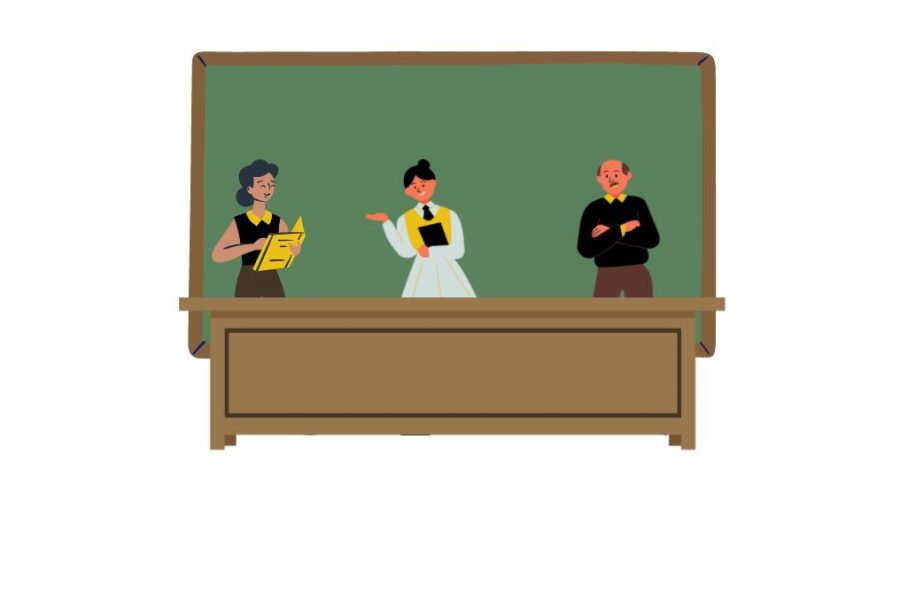Senior activist drafts a proposal for student representation in district office
Senior Sebastián Segarra proposes change within the school board.
Petitions demanding later start times, rallies in the district office parking lot. This year magnified the rifts between the student body and the school board. As senior and voting rights advocate Sebastián Segarra observed his peers’ frustration come to a boiling point, he knew it was time for a change.
“I propose that each high school be granted a representative member on the school board,” Segarra wrote.
Segarra’s proposal to the district board calls for the student body of each district high school to democratically elect an upperclassman representative. This representative would then get one seat on the student board, giving them the opportunity to influence policy-making. It would give students an authority they never had before.
“It is a great idea,” District 204 Vice President Justin Karubas said. “Now, let us discuss if that is something the students and the board really want.”
Karubas knows that realistically, students do not have all the resources they need to be functioning members of the school board. The job itself demands experience, maturity, and a level of responsibility that they may not be capable of at such a young age.
“On one level, there is an area of issues that the students are equipped to handle, but not interested in such as approving a snow removal contract,” Karubas said. “On another level, there is an area of issues that the students are equipped to handle and are interested in, such as food service contracts. However, there is another level where students should be protected from bullying, harassment, threats, incivility, and disorderly conduct.”
Karbuas says that putting students at the forefront of policy-making, especially in such a public role, can make them vulnerable. He says that it is in students’ best interest to find other ways to participate with the school board.
“Students can email a particular school board member,” Karbuas said. “Students can email the whole board. How many students have watched a Board meeting? It usually starts at 6 p.m. and ends at 9 p.m., sometimes later. The board meets at least twice a month on a Monday evening.”
There are alternatives to direct representation that are more accessible to students, Karubas says. But how effective are these resources? How connected are students to the school board?
“I believe that the district is currently unresponsive to our needs through faults of the system,” Segarra said. “As it stands, there is so much in between us and [our representatives]. It took me months to get in contact with the board. Such a process stifles so many great ideas that our students have.”
Segarra realizes that it is time to create change, and the best way to do so is through direct representation. His proposal provides an in-depth outline of how student representatives would be able to enter office. In it, he outlined the election process and limitations of a representative’s authority. For example, any potential candidate must have a letter of recommendation from a staff member, approval of the school principal, and ten signatures of other students in support of their campaign. Under the proposal, students can propose policies to the board, but cannot grant a binding vote to those policies.
Despite Segarra’s clear vision, Karubas claims that actually working for the board may not be as simple as the proposal states.
“I am not sold on direct student representation on the school board,” Karubas said. “A student representative cannot vote and cannot attend an executive session to talk about litigation, personnel, etcetera.”
The issues raised at board meetings are not always student-centered, either. Some days may focus on macro-level scheduling changes, and other days focus on infrastructure and economics.
“I am thinking back to my time as a student at Waubonsie,” [tag]. “I definitely would not have wanted to spend four hours on a Monday night discussing replacing ceiling tiles. No sense getting a seat at the table, if you don’t like the food, so to speak.”
Segarra’s vision goes beyond the odds and ends of board meetings. Hewants changes to the system, some as small as final exam reforms, and some as big as a new grading system.
“Not only do I believe that all of this is possible, but that the scope of our influences may expand,” Segarra said. “We can dramatically increase the quality of life of all students.”
At one end of the spectrum is a student searching for sweeping change. On the other end is a board member who believes that students should place their trust in the district board. The district will always have their best interest at hand, even if it does not always seem like it.
“The school mission, ‘to inspire all students to achieve their greatest potential,’ was written by the board,” Karubas said. “The word ‘student’ appears throughout board policy. The students and board are definitely connected.”
To strengthen their connection, Karubas suggests alternatives to direct representation, like a symbolic vote, or inviting board members to student-led events.
“Students can be invited to make presentations to the board on particular issues,” Karubas suggested. “Administration can be directed to survey students and particular organizations of students. Maybe a Student Board Advisory Council, with students and two board members, is able to focus on the relevant issues and remove the limitations of a full board meeting. There is a way. I don’t have the answers right now, but I like where this is headed.”
The potential for change inspires both parties to take action. While the vision behind progress may look different for Karubas and Segarra, the promise is the same: Reform, in whatever shape that takes.
“Student activism is essential for us to become functioning members of our society,” Segarra said. “Everyone has something they do not like about our schools, and this is the perfect opportunity to take action and to campaign for your causes. We must ensure that we use our voice and participate in collective action so we may tackle the issues we all face.”
Segarra’s full proposal can be read here. Student-led amendment sessions will be available soon.

Iman is a Senior and this is her first year on staff. She is a headlines reporter for The Stampede. She loves watching TV, hanging out with her friends...



This is cool • Apr 10, 2021 at 7:56 pm
It makes sense that students should get representation, since many of us don’t really have a choice to be anywhere else. I.e., we are being governed, right now, without consent.
Hopefully some candidate, if this plan goes through, has school start times on her/his agenda.